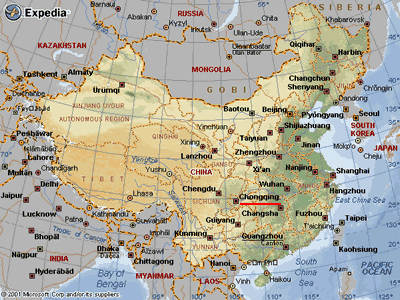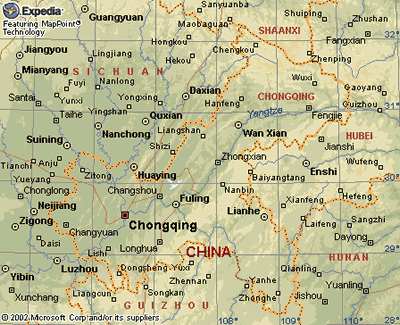Chongqing is situated at the upper reaches of the Yangtse River and at the joint of central China and West China. It is rich in biological resources, mineral resources, water resources and the unique Three Gorges tourist resources. Presently Chongqing is China's biggest municipality in terms of area and population. It covers an area of 82,000 square kilometers.
› History
Chongqing is a famous cultural city with a history of 3000 years. It is the birthplace of Bayu culture. Towards the end of the Old Stone Age approximately 20000-30000 years ago, mankind began to live in Chongqing.
› Geography features
Chongqing is located at the upper reaches of the Yangtze River, between 105'17"-110'1"east longitude and 28'0"- 32'3" north latitude. It is 470 kilometers from east to west and 450 kilometers from north to south. Chongqing neighbors Hubei and Hunan in the east, and Guizhou in the south, it neighbors Sichuan in the west and Shanxi in the north. The terrain slopes down to the Yangtse River valley from south to north, and is therefore quite undulating. In the northwest and central parts are mainly hills. In the southeast are Dabashan and Wulingshan mountains. Major rivers are the Yangtse River, Jialing River, Wujiang River, Fujiang River, Qijiang River and Daninghe River.
› Climate features
Chongqing belongs to sub-tropical humid monsoon climate zone. Annual average temperature is around 18ºC. Average lowest temperature in winter is 6-8ºC and average highest temperature in summer is 27-29ºC. There is little frost and snow and much fog all the year round. Features are warm winter, hot summer, early spring and short autumn. Rainfall is plenty, about 1000-1400 mm a year. There is plenty of night rain when spring is changing into summer, hence the saying "bashan night rains".

